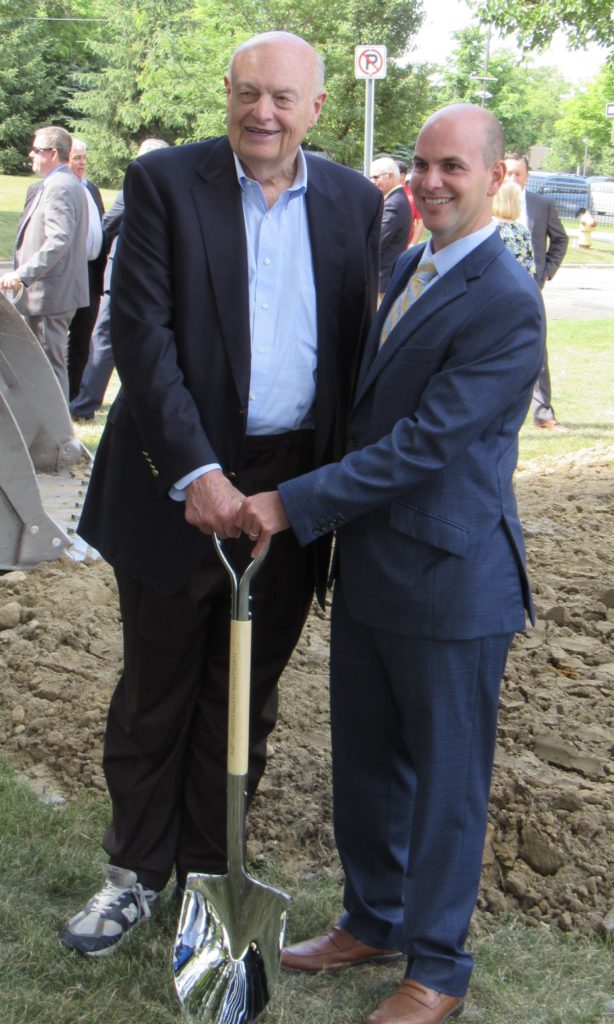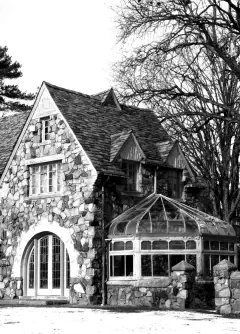By Harold C. Ford
On the heels of a recently released 24-page Focus on Flint report, the Charles Stewart Mott Foundation has announced the availability of $1 million in grants for projects to improve Flint neighborhoods.
“Residents told us a focus on neighborhoods is their top priority,” said Mott President and CEO Ridgway White in a press release, “and they want to see improvements to address safety and blight.”
White rolled out the initiative at the Mott Community College Event Center Nov. 9. Ideas are being accepted through Nov. 30 in the following categories: demolition; housing improvements; neighborhood clean-ups and beautification; and streetlight and sidewalk repairs.

Creating “A little chaos”
White also announced the project with a folksy Facebook post one day earlier Nov. 8. “In honor of my father…I wanted to create a little chaos today,” White said.
White continues the legacy of support for Flint projects championed by the organization’s founder and namesake, his great-grandfather Charles Stewart Mott, and his recently deceased father, William White, who headed up the foundation for nearly four decades.
The elder White, who joined the foundation in 1969 and became CEO in 1979, was commemorated Nov. 4 during during events at Whiting Auditorium and the Flint Institute of Arts. White died Oct. 9 at age 82.
“Tell us how we can deploy a million dollars into the neighborhoods of Flint,” White continued in his Facebook post. “We want to hear your ideas.”
Neighborhoods project continues Mott-White support for Flint

Ridgway White with his father, the late William S. White, at the groundbreaking for the Flint Cultural Center Academy, June, 2018 (Photo by Harold C. Ford)
The neighborhoods project continues the Mott Foundation’s 90-plus years of support for “nonprofit organizations that are working to strengthen our hometown of Flint.”
A few examples of that support which has now surpassed $1 billion:
• relocation of the University of Michigan-Flint campus (1972);
• creation of Mott Middle College, the nation’s first high school to allow students from multiple districts to take college courses for college credits (1988);
• launch of the Genesee County Land Bank Authority (2002);
• a reimagined model of community education in Flint Community Schools (2014);
• a new campus in downtown Flint for Michigan State University’s College of Human Medicine (2014);
• $4 million to support Flint’s reconnection to the Detroit water system (2015)
• a $100 million commitment to help Flint recover from the water crisis (2015).
“Though we’ve granted more than $1 billion locally,” White wrote in the introduction to Focus on Flint, “we know that, too often, struggles still thwart success, and pessimism competes with promise. National media attention has, for the most part, painted a very negative picture of Flint.”
Community conversations led to report
“We had over 30 community engagement sessions with a lot of great people (about 400) sharing ideas,” White declared. “We appreciate residents taking time to share their experiences and advice with us.
“As Flint continues to recover and rise from the water crisis, it seems we’re at a point where we should take a big picture look at where we stand—and set our sights on where we want to be,” he continued.
“Big picture look” depicts a challenged community
The cogent and colorful Focus on Flint report depicts a community with plentiful challenges and a few bright spots. Some excerpts:
“How Flint compares to the rest of the country”:
• Those with a 4-year college degree: Flint 13 percent; U.S. 32 percent
• Child poverty rate: Flint 61 percent; U.S. 18 percent
• Median home value: Flint $27,400; U.S. $217,600
“Survey Snapshots”:
• 68 percent “would not recommend Flint to others as a place to live”
• 75 percent “believe the quality of public education in Flint is a serious concern”
• 81 percent “describe themselves as happy”
“Aspects of life in Flint” (ratings are on a scale from 1, worst, to 5, best):
• Water, 1.8: —”Flint residents pay nearly three times more for water than residents in 13 comparable midwestern cities.” “Some Flint residents spend nearly 18 percent of their household income on water bills.”
• Housing, 2.2: —“Housing in Flint is more affordable than in neighboring communities.”
• Public safety, 2.3: —77 percent “identified crime and safety as a serious concern.” —“State revenue sharing with local cities fell by 45 percent from fiscal year 1999 to 2017.” —Crime rates in Flint have declined from 2007 to 2017, but remain significantly higher than in Michigan and the U.S.
• Economy, 2.4: —Unemployment: Flint 8.8 percent; U.S. 4.9 percent —Labor force as a percent of the total population: Flint 35 percent; U.S. 49 percent —Top employers in Flint: General Motors 8,203; health/medicine 7,164 (Hurley, McLaren, Diplomat); higher education 4,979 (UM-Flint, Mott CC, Kettering)
• Standard of living, 2.5: —“41 percent of households in Flint live at or below the federal poverty level.” —87 percent of Flint’s children are “living in high-poverty neighborhoods.”
• Education, 2.6: —Flint Community Schools: 19 percent third-grade reading efficiency; 67 percent four-year graduation rate; 4 percent college/career readiness; 43 percent chronic absence rate.
• Health, 2.8: —Rates of obesity, hypertension, and diabetes “are much higher in Flint than they are across the county, state, and nation.” —Numbers are also unfavorable for physical inactivity and smoking. —Rates of teen pregnancy, infant mortality, and average life expectancy are not favorable compared to the rest of Genesee County.
• Arts and culture, 3.6: —Local support for the arts was demonstrated with the 2018 passage by Flint and Genesee County residents of the Arts Education and Cultural millage.
Open to ideas through Nov. 30
The Mott Foundation will be accepting ideas to improve Flint’s neighborhoods through Nov. 30. Interested persons can submit their ideas to focusonflint.org/ideas or call 810-237-4888. “Into 2020 we’re going to narrow down ideas…to help determine where the Foundation’s money will go,” White said.
EVM Staff Writer Harold C. Ford can be reached at hcford1185@gmail.com.


You must be logged in to post a comment.